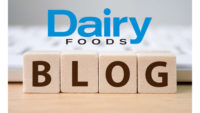Narrow margins, aging plants, increasing competition — today’s dairy plant operators are under enormous pressure to solve challenges such as these without overspending on capital projects. This often means extracting as much value as possible from equipment vendors by compelling them to take on design responsibilities — responsibilities that should instead fall to a qualified engineer with expertise in the dairy industry.
While this practice may reduce upfront spending, it could lead to compliance issues at best or, at worst, significant safety risks for workers in your plant.
A safe design takes the whole picture into account.
A compliant, efficient, and optimized plant is more than its component parts. It’s a functioning whole, based on a bigger picture of end-to-end unit operations. The problem is that equipment vendors can’t always see that bigger picture. They’re experts in the safety and functionality of their equipment across a broad range of potential applications, but with that breadth of expertise comes a possible lack of depth. They may not have the knowledge needed to understand how that equipment will behave in your specific plant. What happens when that piece of equipment is connected to components from other vendors? What about mitigating hazards that are unique to its location in your plant, such as the risks of combustible dust or pressurized steam lines? What are the local code requirements governing utility connections? Will this piece of equipment comply with your building’s limits, such as floor load capacity and minimum evacuation pathways?
When it comes to answering these and other critical questions, too many dairy producers assume that they share equal responsibility with their equipment vendors. From a regulatory perspective, though, the end producer is solely responsible for compliance, unless the equipment vendor takes on a licensed engineer from outside of their organization. As the “engineer of record,” that individual takes ownership of the design. But equipment vendors are under tremendous pressure to underprice their competitors, which means they’re unlikely to offer such value-added services — nor are they likely to invest time and money in studying all the varying hazards related to your specific process and the codes that govern your local region.
Compliance isn’t the only factor to consider. If your dairy plant provides ingredients to an upstream manufacturer, you may soon find yourself facing increased scrutiny. More companies are pushing for a documented safety record from their suppliers as part of an overall market shift toward responsible manufacturing. Unless you can demonstrate the integrity and thoroughness of your design and engineering process, you may soon find yourself without a buyer.
Turn to the experts
A plant is responsible for more than producing and shipping products. It is equally responsible for ensuring the safety of all individuals who pass through it, and the safety of consumers who put those products on their table. To meet that responsibility, plant operators must design, implement and enforce thorough safety practices.
If you have the in-house expertise necessary to understand your regulatory environment and its impacts on your system as a whole, then you may be able to take responsibility for designing and operating a safe and compliant plant. If not, then it’s time to consider partnering with a qualified engineering firm to complement your vendor relationships.
Look for a firm with experience working in the dairy industry, not only will they understand your specific business goals and the pressure you’re under to meet them, but chances are good that they can help you fill any gaps in your vendor supply chain with manufacturers who are uniquely suited to deliver what you need. This investment will pay off in the long term as you reap the cost-saving benefits of operating a safe, compliant, and holistically designed plant for decades to come.










